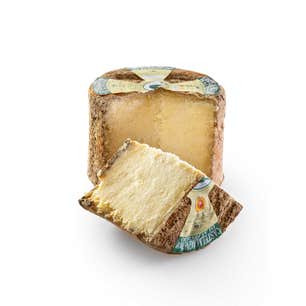Hard Cheese

Discover our special selection of hard cheese, only the best Italian Cheese available for your gourmet charcuterie boards. Try the famous Italian Pecorino to live an authentic Italian experience.

Discover our special selection of hard cheese, only the best Italian Cheese available for your gourmet charcuterie boards. Try the famous Italian Pecorino to live an authentic Italian experience.
Longino & Cardenal wants to spread knowledge about the famous cheese production in Italy and in those countries where hard cheeses are important. You can order on our website and receive special cheeses in Dubai, in the comfort of your house. Hard cheeses are among the most used in the kitchen because of their versatility. You can use hard cheeses by cooking or simply eating them as a starter or as a snack during a party.
To make a great hard cheese, the most important thing is the long aging period, which, depending on the type, can last from about three months to more than three years. The result will be a very flavorful cheese, because the aromatic intensity is linked to the time of maturation.
Typical examples of Italian cheeses are pecorino and the toma. Among this wide category of hard cheeses, there are also semi-hard cheeses, slightly softer, such as almost every cheese from our partner Des Martin. The international market offers so many variant, such as the English cheddar.
Hard cheeses can be used in so many recipes: to enhance a cheese board, served with an aperitif, as a dessert, and to fill sandwiches. In hot gastronomy, they are perfect for gratin and as topping for pasta. And what about the great Swiss classic, fondue? It certainly wouldn't be the same without our hard or semi-hard cheeses!
The history of these cheeses has very ancient roots. Their birth dates back to around 1100, although the precise origin is still uncertain. As the name tells us, hard cheese is firm and savoury very often.
The quality of the milk is the most important element, especially considering the fact that much of the processing is done with raw milk. Milk should not be collected at temperatures below 8°C because refrigeration would actually bring some drawbacks during the production.
The production involves separating and draining the whey before pressing the curd, which is then either brined to create a hard rind or waxed. The last step is the aging, the cheese is aged between 2 and 36 months, or in some cases even longer. Aging determines the intensity of the flavour. A well-aged cheese will be more flavourful, less creamy and grainier in texture.
Often with strong notes of hazelnut and cooked butter, hard cheeses express all their umami taste, like that of a rich broth or slowly cooked stew. The texture is granular and firm, forming natural salt crystals with age, it also has a crumbly body, perfect for the cheese grater such as the ricotta.
Most hard cheeses develop a natural and tough rind, which is too hard to eat and this is the reason behind the addition of the rind into soups, sauces and stews.
The family of hard cheeses in Italy is very strong and it can boast among the most extraordinary nuances of flavor. Many Italian are used to add these cheeses into salads, adding a touch of sophistication to an everyday meal. Pecorino is a staple in fridges across Italy. White and rubbery, beige and flaky, solid and golden, there's no cheeseboards without pecorino. But what exactly is pecorino?
Pecorino is a great Italian classic, made using fresh milk from sheep, it has been produced in the same way for over two millennia. This means the cheeses tend to have a sour note, even though it is slightly milder than Parmigiano Reggiano, with some notes of spice and caramelised butter, pecorino is the king of cheeses to pair with fresh figs, honey and white wine.
The first thing to know when choosing the right pecorino are the various ‘ages’. Pecorino fresco is fresh, mild, and usually used in salads. Semi-stagionato is aged, ideal for an antipasto platter, or, depending on the variety, a filling for a sandwich. Such varieties are often served with honey or light jam. Finally, there are the fully stagionato, aged cheeses, some of which are aged for as long as 36 months. Most people find these too strong to eat on their own so they’re usually reserved for grating onto pasta or into sauces.

